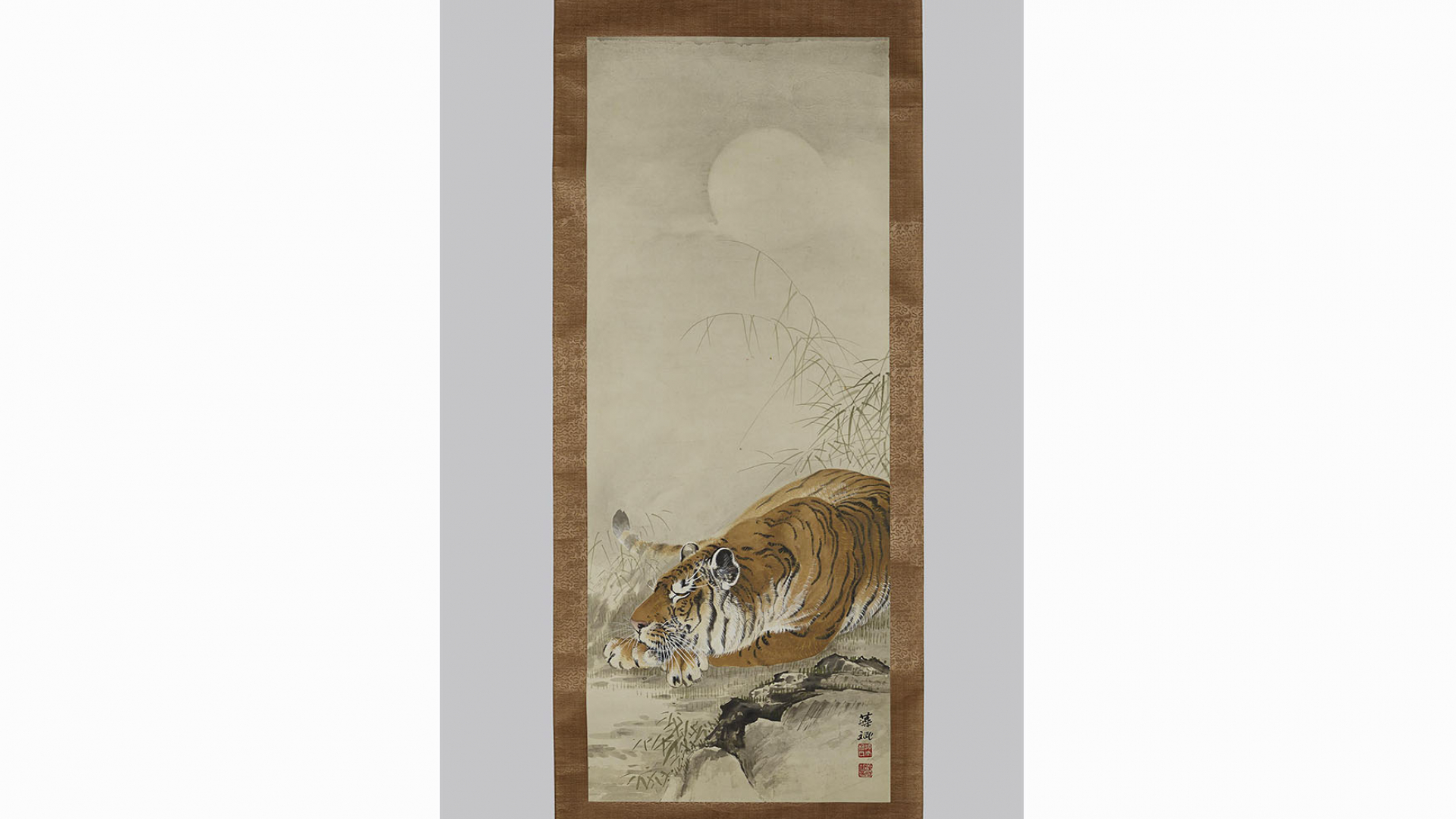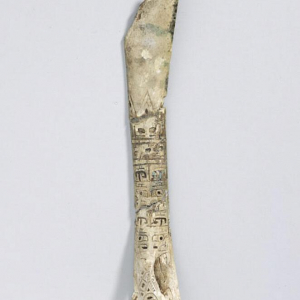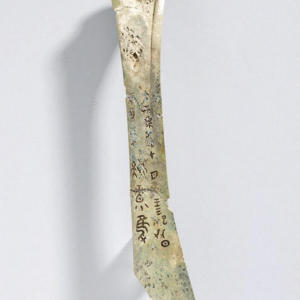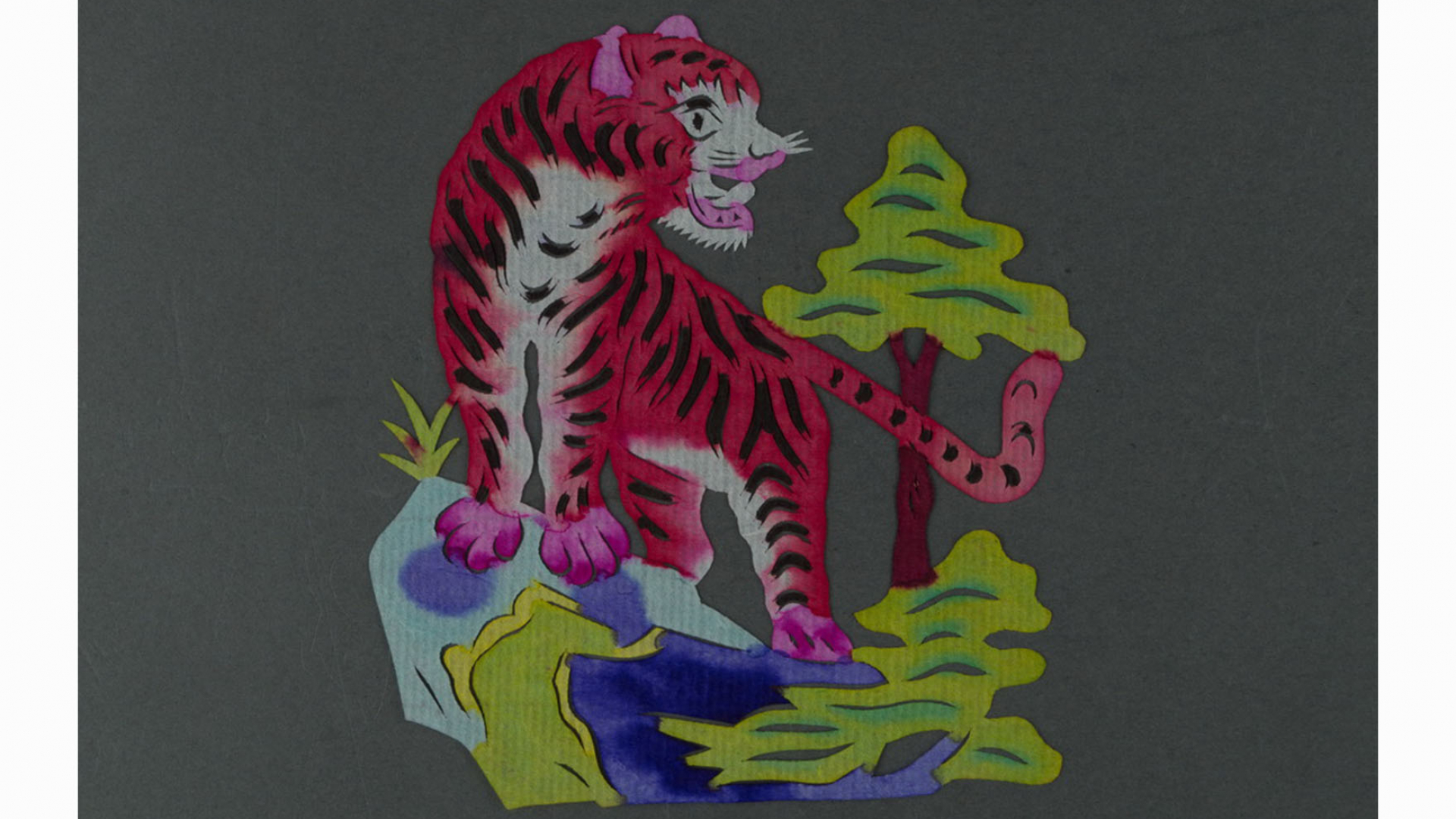Symbolizing strength, courage, and good fortune, the tiger motif can be found on bronze vessels, tomb figurines, paintings, and even utilitarian objects such as pillows
February 1, 2022, marks the beginning of the year of the tiger, the third animal in the Chinese zodiac. People born in a specific year are thought to have attributes of that year’s animal. Like all animal zodiac signs, the tiger possesses good prospects as well as bad ones.
People born in the year of the tiger are said to be adventurous, courageous, and charismatic, often looked at by others as the leader of the group. On the other hand, they are said to sometimes take up too much responsibility that they become overwhelmed and restless, leading to difficulties in completing assigned tasks.
Tiger bone hunting trophy, inscribed bone, first half of 11th century BCE, Shang Dynasty, Anyang Period, Fifth Period, China. ROM 931.52.460. Bishop William C. White Collection.
Tiger hunting was an important social event during the Shang dynasty. Tiger bones were kept as a trophy by the king to signify the royal hunt. This tiger bone from ROM’s Chinese collection was inscribed to document the royal event and decorated with carving motifs similar to other Shang ritual vessels, marking the rarity and preciousness of the material and the tiger itself.
The tiger motif is also found on bronze vessels, tomb figurines, paintings, and utilitarian objects such as pillows. In ROM’s Chinese collection, several Cizhou-ware pillows produced during the Song and Jin dynasties are in the shape of a tiger or decorated with the tiger motif. Like many other utilitarian objects, these ceramic pillows were individualistic and a popular commodity in the marketplace that reflected the aesthetics of its owner.
The tiger motif embroidered on the insignia of Qing dynasty military officials signified a military officer of the fourth rank. In addition to using the tiger as a rank insignia, Qing military officials sat on tiger skin throws when conducting official business. The tiger is also a popular decorative motif associated with auspiciousness and offers protection from evil spirits. It was often depicted on Chinese New Year prints in the form of a papercut, which were hung on the door and around the household for auspicious wishes and good fortune.




